

Not much chance of seeing any unusual birds in an urban temple but the common ones will be there and the setting can make for some interesting photographic compositions.
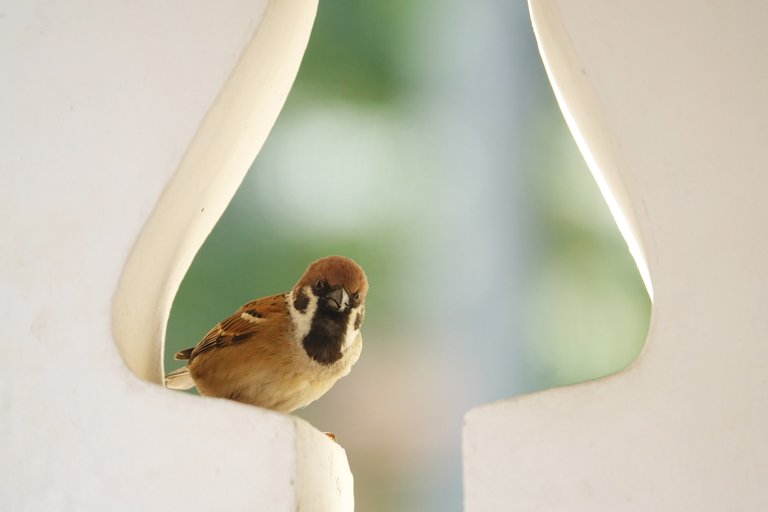
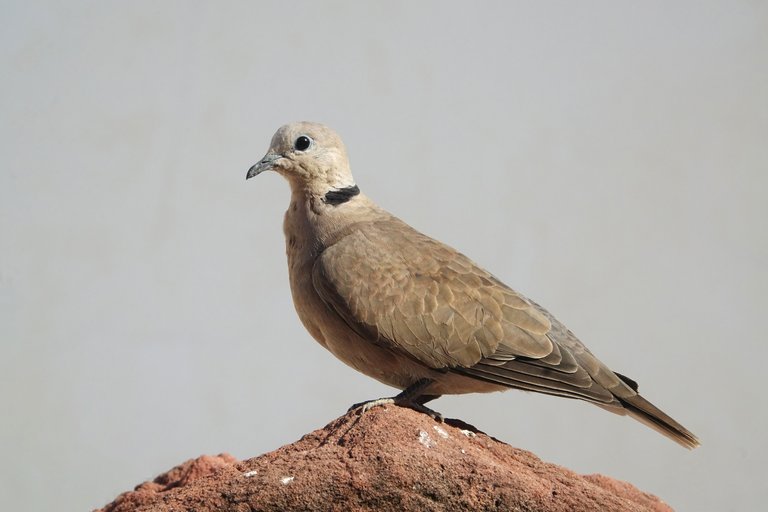
Most Buddhist temples in Thailand are ornate and colourful almost to the point of being a bit gaudy. Red, yellow and orange predominate but green trim is also quite common. With reflective tiles and plenty of prominent manmade shapes and patterns finding some good shots, particularly with striking backgrounds, is not too difficult.


These photos were all taken at one temple during a morning stroll and feature the extremely common rock pigeon, red turtle-dove, tree sparrow and great myna. Unfortunately, I failed to pin down the scaly-breasted munia and olive-backed sunbird who were also flitting about.
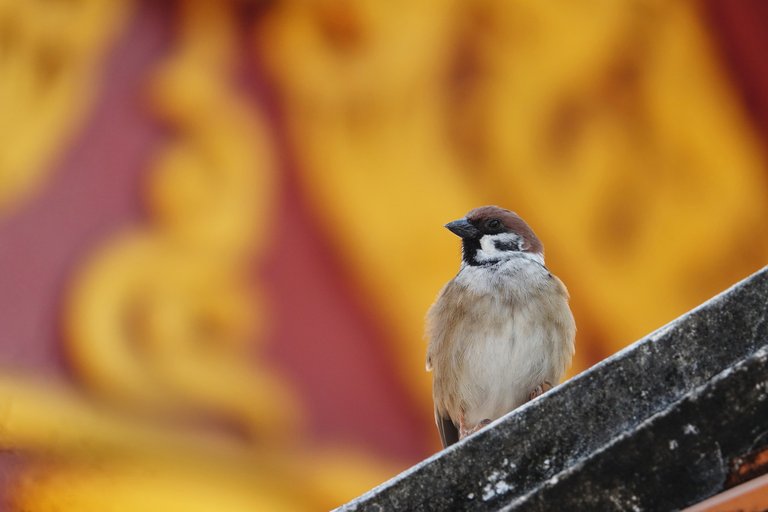

Amongst all the sculptures and painted dragons I was pleased to see this little sparrow, probably in a flap being so close to those dragons.
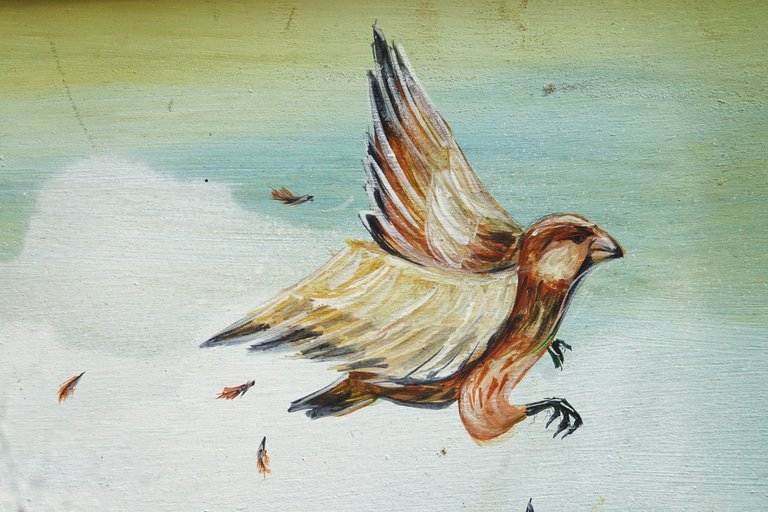
Temples can be very busy places with people coming and going all day. Combined with the peaceful atmosphere of the grounds and people's respectfully quiet demeanor this makes the birdlife quite approachable.
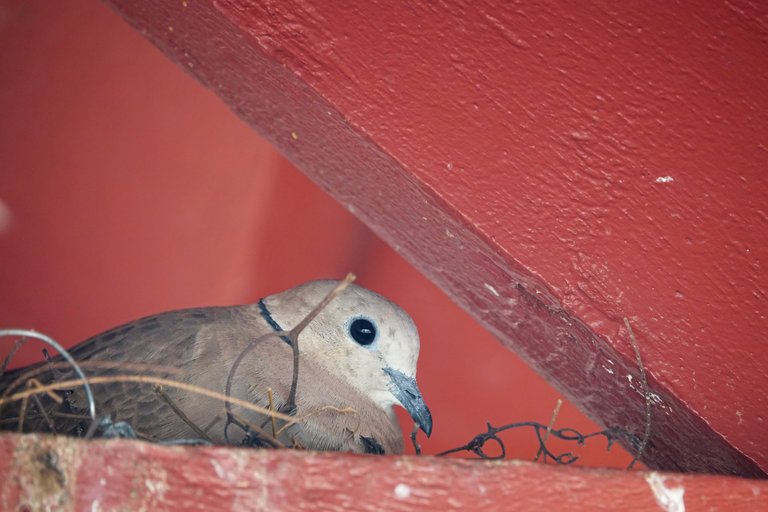

Another attraction for the birds is the variety and complexity of the structures around. Temples are often the only places in an area with large trees but they also tend to keep some open areas. Then the buildings themselves are usually large and intricate with nooks, ledges, crannies and ridges everywhere. The sparrows love all the intricate little spaces while the mynas eye the grounds from the roofs. Such choice makes it a great place for living and nesting compared to the more sterile concrete boxes built elsewhere.
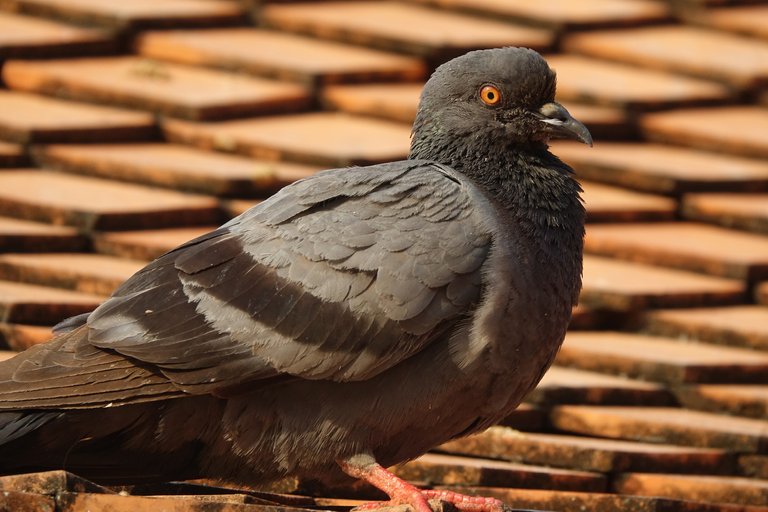
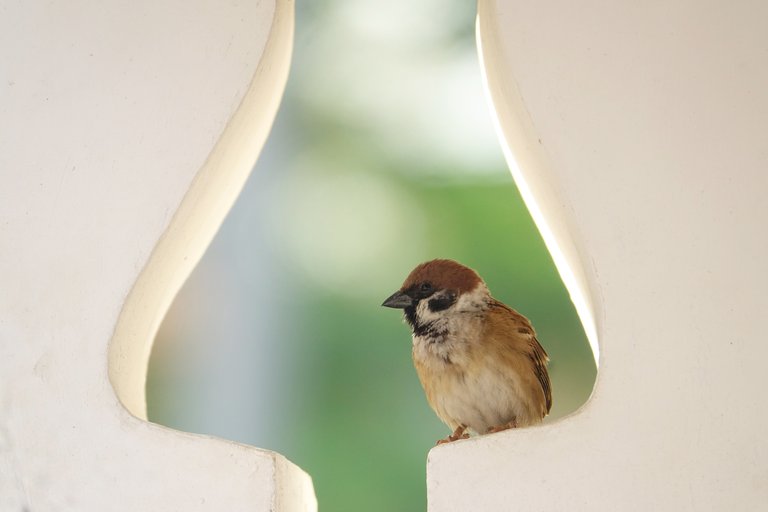
Temples are traditionally a haven for everyone and everything. In modern society this means unwanted dogs often end up in a temple and the monks take it upon themselves to provide food for them. This means there are always some scraps around for the birds and the dogs never show any interest in chasing them. Even temple cats seem quite laid-back about having birds so close.
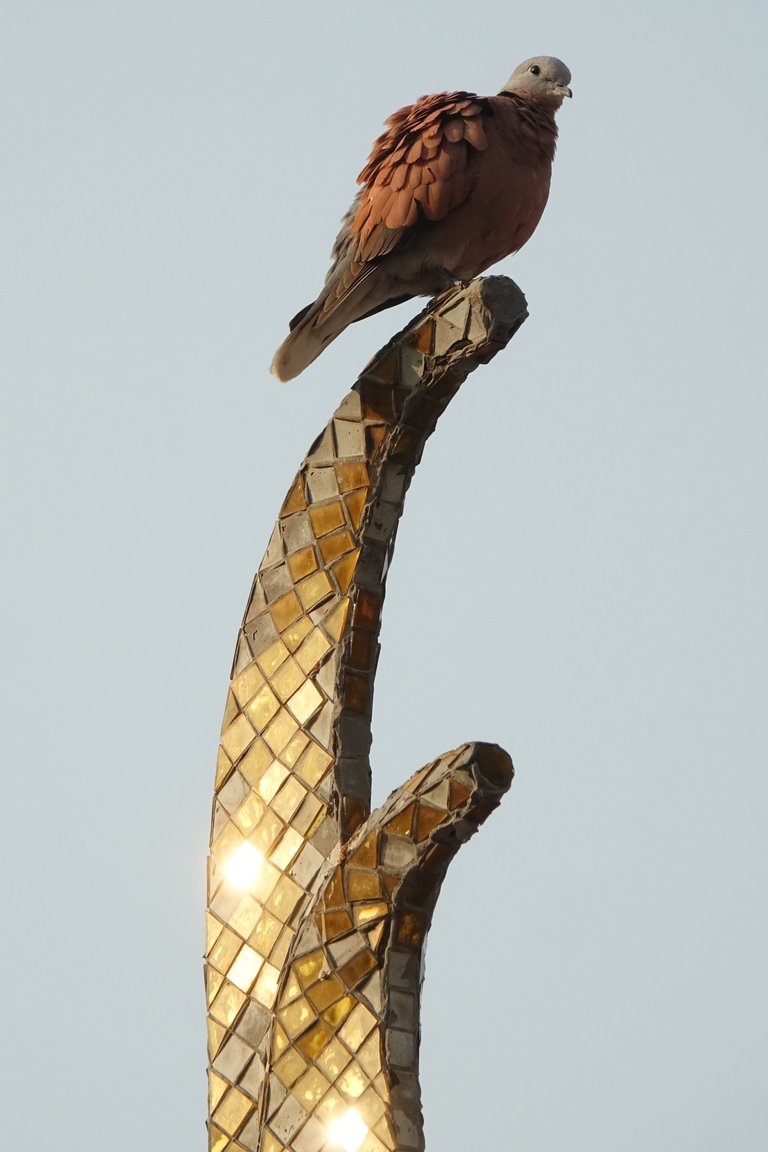
This temple also has a large fishpond with bread available for visitors to feed them and there are always pigeons nearby ready to beg for a share.

Food, space and peace makes for happy birds, which in turn give the temple a welcoming feel.


 for 2 days
for 2 days 
